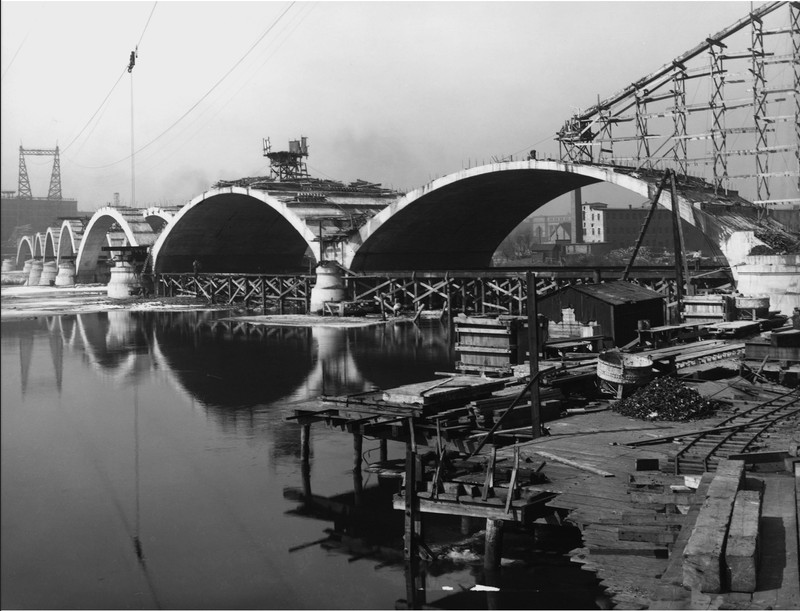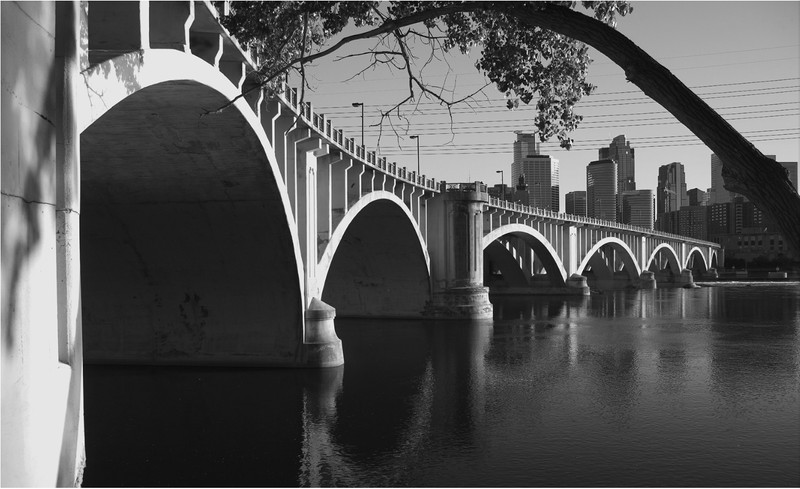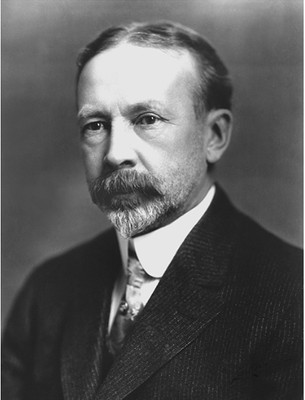Third Avenue Bridge
Introduction
Text-to-speech Audio
Sometimes such a ubiquitous icon of the Twin Cities landscape goes unnoticed in our day-to-day lives, but the Third Avenue Bridge in Minneapolis is no less important or functional than it is aesthetically pleasing. In 1912, two neighborhoods on either side of the Mississippi River were continuing to expand, so much so that the Minneapolis City Council commissioned a Mississippi River crossing in order to better serve them. Norwegian-American immigrant and city engineer Frederick Cappelen (1857-1921) eventually came up with a design that combined the aesthetic qualities of an arch structure and a pier structure that accounted for the damaged river bottom. Not only was this a functional victory, but it remains visually pleasing and a staple of Twin Cities iconography to this day, over a century later.
Images



Sources
Gimmestad, Dennis. "Third Avenue Bridge." Norwegian-American Studies, vol. 37, 2019, p. 1-4. Project MUSE, https://doi.org/10.1353/nor.2019.a799257.
Gimmestad, Dennis. "Third Avenue Bridge." Norwegian-American Studies, vol. 37, 2019, p. 1-4. Project MUSE, https://doi.org/10.1353/nor.2019.a799257.
Gimmestad, Dennis. "Third Avenue Bridge." Norwegian-American Studies, vol. 37, 2019, p. 1-4. Project MUSE, https://doi.org/10.1353/nor.2019.a799257.
Gimmestad, Dennis. "Third Avenue Bridge." Norwegian-American Studies, vol. 37, 2019, p. 1-4. Project MUSE, https://doi.org/10.1353/nor.2019.a799257.
